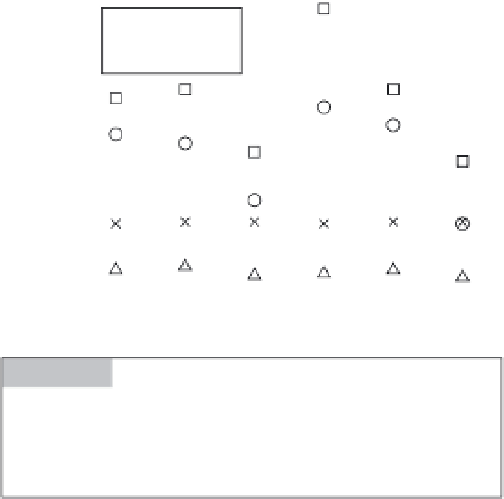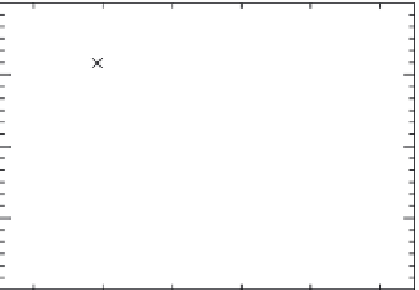Environmental Engineering Reference
In-Depth Information
Table 2.2. Monthly precipitation and estimated recharge in millimeters by the water-budget method,
R
1,
and the Darcy method,
R
2, for a site on eastern Long Island in 1980 (after Steenhuis
et al
.,
1985
).
Jan
Feb
Mar
Apr
May
Jun
Nov
Dec
R
1
56
29
153
93
-17
-16
81
35
R
2
31
4
137
114
24
9
16
24
P
42
27
176
139
49
68
92
13
storage changes that were unaccounted for.
The two methods produced similar estimates of
recharge totals for the 8-month period, 414 mm
for the water-budget method and 359 mm for
the Darcy method. These estimates correspond
to 68% and 59% of the 606 mm of precipitation
for this period.
800
P
R
R
off
ET
600
400
200
Example: Southwest India
Langsholt (
1992
) conducted a soil water-budget
study in the state of Kerala, southwest India,
during the monsoon months of June through
August of 1988 and 1989. Permeable lateritic
soils, 10 m thick, overlie low-permeability bed-
rock. Heavy monsoon rains typically produce
water-level rises of several meters in a perched
water table within these soils. The water budget
for the 600 m
2
field site is given as:
0
June
July
Aug
June
July
Aug
1988
1989
Figure 2.8
Water-budget components for June, July,
and August 1988 and 1989 for site in southwest India
(after Langsholt,
1992
). Data for June and August 1988
are for partial months.
P
is precipitation,
R
off
is runoff,
R
is
recharge, and
ET
is evapotranspiration.
(2.28)
2.4 Mesoscale application
R
=− − −
P
ET
∆
S
R
uz
uz
off
Instrumentation included two precipitation
gauges, a V-notch weir located in the drain-
age channel that bisected the site, water-level
recorders in observation wells, and a neutron
probe for monitoring changes in soil-water
content. The Morton (
1978
) equation was
used to estimate evapotranspiration. Air tem-
perature, humidity, and sunlight duration
data were measured at a station 1 km from
the field site. The hydrology of this system is
rather unique; the soils have a high perme-
ability and a very large storage capacity. In
spite of the high precipitation rates (
Figure
2.8
), runoff from the site was essentially neg-
ligible. The magnitude of recharge (70% of
precipitation) greatly exceeds that of both
runoff and evapotranspiration; therefore, the
water-budget method is well suited for appli-
cation at this site.
The term mesoscale refers, herein, to a medium
to large watershed with a length scale of 1 to
1000 km. At this scale, measurement of water-
budget components at a single location may
not produce values that are representative of
the entire basin. Accurate characterization of
the water budget requires measurements or
estimates at multiple locations in conjunction
with a scheme for integrating or upscaling the
information from these locations to the basin
as a whole. Fiscal and time constraints and
limited availability of data often dictate the
application of simplified estimation equations
in place of the direct measurement techniques
discussed in
Section 2.3
. This section provides
a review of methods for estimating individual
water-budget components. The methods pre-
sented are straightforward and inexpensive to
















